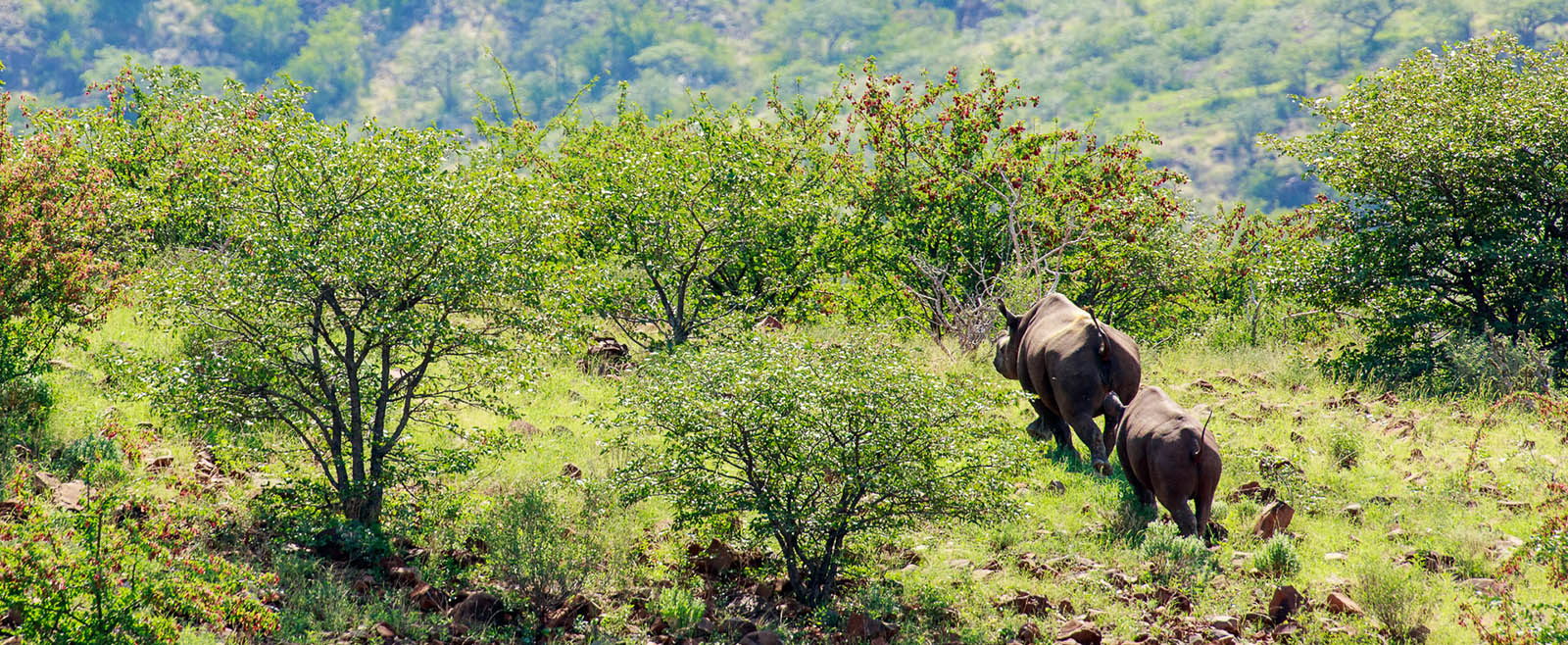
By Brian Rapsey
Travel Filmmaker7 Jun 2019 - 7 Minute Read
This story starts in 2015 with a chance encounter with a mate which resulted in me heading off at short notice to Namibia. And it hasn’t quite ended yet: the experience still plays out in the work I do today, both as the mentor of the World Nomads Travel Film Scholarship and in my own projects.
The friend was Chris Noble, General Manager of World Nomads; the place was our local cafe. I had square eyes from months of video editing. Chris asked, “You all that busy at the moment?” and, for a change, I wasn’t.
“I can get you on a plane to Namibia next week.”
Almost before I knew it, I was on my way to southwest Africa. Most people know Namibia as the filming location for the dystopian Mad Max: Fury Road. Sand dunes. Arid vastness.


I had a free spot on a travel junket. Our first stop was Etosha National Park, which spans a colossal 8,598mi2 (22,270km2). I felt very much the tourist in Etosha, on my first-ever African safari, in a truck packed with long-lensed cameras.

My real insight came later – 155mi (250km) towards the coast at Grootberg Lodge, on the rim of the Etendeka Plateau of Damaraland.
It was over dinner at the lodge that all the jigsaw pieces fell into place, and changed the way I thought about the world and the stories I wanted to tell.
We learned how the lodge is part of the Khoadi//Hoas Conservancy and how (in so many ways) it has pioneered a model for sustainable wildlife and habitat conservation which benefits and sustains the local community – i.e., the very people who staffed the lodge and entertained us at dinner.

To be brief, if you want to stop the poaching of certain wild animals, you need to make their conservation more valuable to the local communities – especially the tribespeople – than the profits from poaching. Make the conservancy community-run or owned. Employ these locals and cultivate their ownership in the project. Use the profits as a way of educating or training them out of relative impoverishment. Lastly, make it a sensational place for travelers (like me) to come and experience the benefits.
The next morning, we were up at dawn to track some of the endangered Black Rhino the lodge is striving to protect. We climbed snugly into two safari trucks and, with a team of local trackers, wound our way to the valley below. The landscape had an austere beauty, and there's increasing competition for land in subsistence farming and cattle grazing. I imagine, in this environment, rhino horn poachers would have to be both extremely resourceful and pushed to the edge.

Our guides were by turns jovial and serious. A flyover by an army helicopter out poacher-spotting reminded us of the stakes.
Stopping at regular intervals, the trackers wandered through the scrub looking for signs. Derrick Jacobs, our host from Blue Crane tours, was a passionate commentator on the social and environmental context of his country, and once I showed an interest in these things, he introduced me to a whole new dimension of the land’s stark beauty. I could tell how significant he felt this project was, and we all shared his elation at finding the first rhino print.


With that first clue, all our senses were heightened: were we up or down wind from the animals? How near or far might they be? Since the sound of the vehicles would warn them off, how close could we get before we dismounted and began tracking by foot?


Finally, we found what we were looking for – fresh rhino dung! The question now was where were they headed, and could we travel towards them upwind?
The trackers decided to head to the next valley, where we got out of the trucks and proceeded on foot. “Walk very quietly – they have keen hearing,” we were told.



When we finally spotted the rhinos in the distance, our excitement made us speed up – but we were noisy, kicking the dolomite rocks on the ground, which rang out like balls in a pool hall.
At last we got a good look at the mother and baby Black Rhino. Tracking these elusive animals by foot was so different from driving up to game in the vast, open plains of Etosha – these were the only creatures we’d seen on this expedition, and now, just across a dry river bed were two wonderful creatures, who had heard us coming and were retreating back to peace. They’d been de-horned and had yellow crosses painted on their backs – there so poachers will know they’re not worth the effort.
Our spotting was fleeting, but I was glad to get an eyeful, and to see the mother leading her child away from us human creatures.

This experience proved to be a turning point for my work as the mentor for the World Nomads Travel Film Scholarship. Previously, the scholarship was focused on adventure travel stories. But we moved it back towards documentary, designing assignments around the intersection between travelers, social enterprise, and the local community. This relationship forms the basis for the Footprints stories we've been making for the Scholarship. It’s also influenced my own career, allowing me to take on the type of projects I’m passionate about.
So many reportage stories are adept at naming and exploring a problem in our world. What I love about our films is that they explore and celebrate a potential solution – and hopefully cultivate a community of world travelers who benefit the places and people they visit.
Hear our interview with the author:
Discover similar stories in
transformation





No Comments